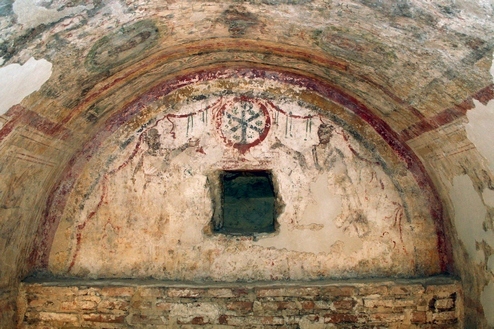PROJECT DESCRIPTION

Cella Septichora, Early Christian Mausoleum
Cella Septichora, Early Christian Mausoleum
Pécs as a 2,000 years old city, has always been inhabited since the Roman age. Different nations and cultures living here following each other, or even side by side left us highly valued architectural and intellectual heritage. A special part of the above are the records from the early roman age (4th century, A.D.), which can be found in the northwestern part of the city, around the basilic, surviving the hardships of both the Migration Period and the storms of the middle-ages.
The late-roman, Early-Christian northern cemetery of Sopianae became part of the World Heritage in 2000. This title (world heritage with rich cultural history) was earned thanks to the architectural specialty and wall-paintings of the site, which demonstrate the burial architecture and art of the northern and western provinces of the Roman Empire in a many-sided and complex way, and also displays the roots of a still alive culture and civilization affecting our common days. And what kind of records are these? Hundreds (or even thousands) of brick tombs, dozens of smaller graves built of stone and brick and also some bigger buildings of cemeteries.
The early Christian records of Pécs are universal and local, but under all circumstances highly valued evidences of the Christian death cult of the first millennium, the born and afterlife of a new religion. There is no other early Christian record (most of which can be visited) in any other European province of this size and diversity. Wall paintings decorated with biblical and other religious scenes are outstanding creations of late roman Early-Christian art.
Additional information can be found on pecsorokseg.hu
Exhibition development elements of the Valuable Pécs project:
- Swap of the extant information boards
- Indicating ground level of the roman age in the visitors center, in order to help easier interpretation
- 3D models, movies, pictures and texts about the records of the Early-Christian cemetery, known records of the middle ages, Püspökvár and of buildings from the Ottoman invasion.
- Scale-model of the Early-Christian cemetery, the bishops’ castle and the university, which can be disassembled and cleaned. These are going to be multi-purpose models, used for museum educational tasks and also for blind and low-vision people, supporting easier interpretation.










